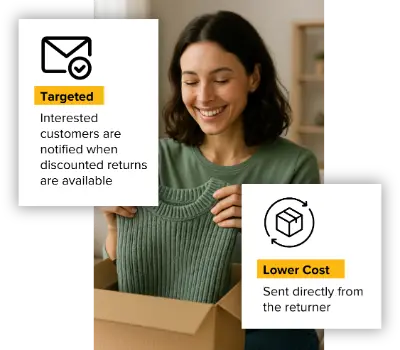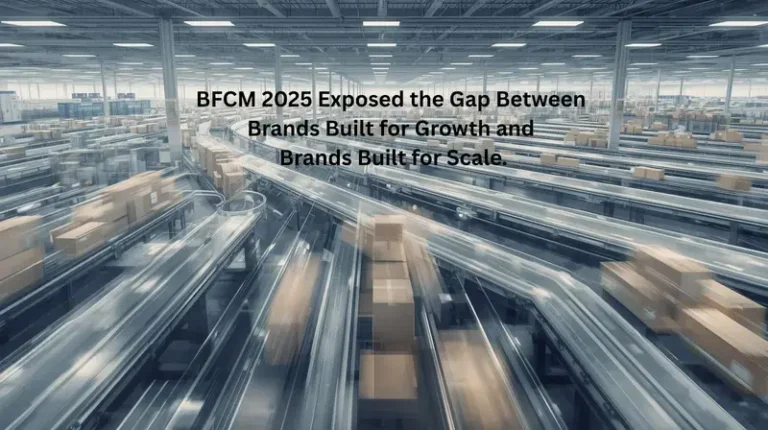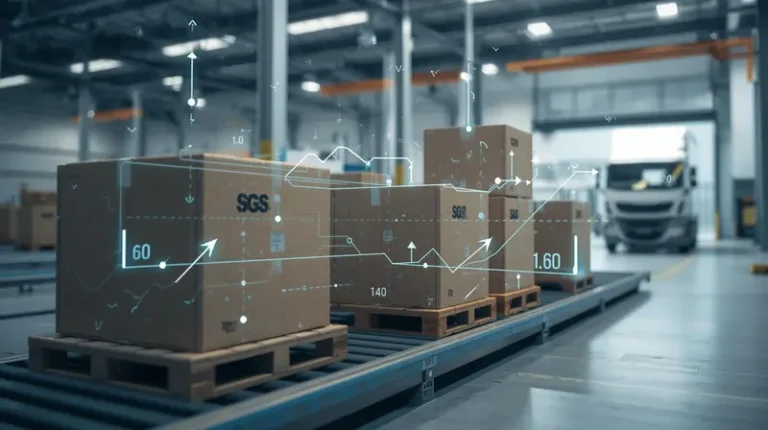Why You Must Use the Best Shipping Software and Avoid Legacy Systems (e.g., ShipStation) in 2025

Last updated on May 15, 2025
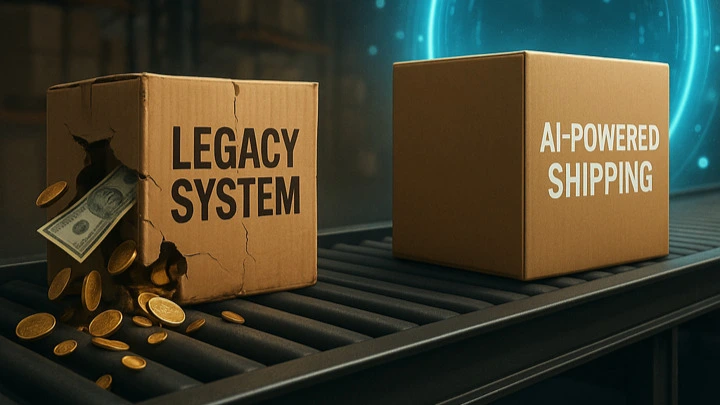
In this article
 10 minutes
10 minutes
The world is changing has already changed!
It’s been 2½ years since the release of ChatGPT. While many people were not worried about artificial intelligence (AI) and large language models’ impact on their business or job anytime soon, change came quicker than most laypeople expected. Online Search has changed forever. Traditional marketing has changed forever. And if you’re not keeping up and learning to embrace and leverage these new tools, you’re falling behind. And you may not even know it until it’s too late.
Similarly, ecommerce shipping software has changed right under your nose, and if you don’t keep up, you’ll lose to the competition. Because their margins are better, their shipping spend is lower, and they’re able to do more with less.
Introduction to Shipping Software
At its core, ecommerce shipping management software automates and manages order fulfillment workflows and inventory for online businesses. It integrates with various shipping carriers to generate shipping labels, track inventory, and streamline on-time deliveries. By automating these processes, businesses can optimize shipping based on cost and speed, improving post-shipment management and enhancing the customer’s post-purchase experience.
Shipping software is essential for ecommerce businesses to reduce costs and boost customer satisfaction. It automates tasks like printing shipping labels, tracking shipments, and managing inventory, saving time and minimizing errors for accurate order processing.
Access to discounted shipping rates through shipping software provides significant savings on every shipment. Optimized shipping workflows ensure timely deliveries, critical for maintaining high customer satisfaction.
By using shipping software, businesses can also improve their inventory management. Inventory management is streamlined with real-time tracking, low-stock alerts, and automatic order routing, reducing stockouts and improving operational efficiency.
Free shipping software options are available, but caveat emptor (buyer beware): the software is free, but you’re really just redirecting money from your bottom line to someone else. Read on to see where.
So, what’s changed about shipping and fulfillment software? Everything.
Let AI Optimize Your Shipping and Boost Profits
Cahoot.ai software selects the best shipping option for every order—saving you time and money automatically. No Human Required.
See AI in ActionHow Shipping Software Has Changed
It used to be that warehouse staff would log into a legacy system, spend hours manually rate shopping across carriers and services, create shipping labels, and then go pick/pack in time for the carrier pickup window to open.
Next-generation fulfillment solutions are taking the thinking (and labor) out of this non-value-added task and doing all the work autonomously, in minutes. Perfectly. In the middle of the night when you’re sleeping. Warehouse teams haven’t even poured their first cup of coffee in the morning, and 95%+ of the day’s shipping labels are already created and can all be printed with one click. These solutions integrate directly with existing systems, making them ideal for medium-sized businesses.
It used to be that tribal/institutional knowledge left the judgment of how to ship an order to the staff (warehouse manager or otherwise). But they make mistakes. And they don’t even realize it. Worse, the business owner(s) don’t even register it. Have you ever said, “My guy doesn’t make mistakes…he’s been doing this for 15 years?!?” Probably.
I was on a call with a client demonstrating how fully automated (humanless) rate shopping and label creation works. The system picked a UPS Ground label to deliver an order from Cincinnati, OH, to Brooklyn, NY, in two days for $13.36. He said, “Wait, I always ship that order using UPS 2nd Day Air.” We calculated the real-time rate for UPS 2nd Day Air, which was $26.71. He said in front of his whole team on the call that he ships 50 units of that SKU to New York every week. I did the quick math and let him know that he’s losing the company nearly $700 per week on that single SKU going to that one state! Use the UPS Ground Map to see for yourself. People make mistakes. Especially after something has become tribal knowledge.
Humans get tired. They get set in their ways. Manual rate shopping is a bear, so warehouse staff find workarounds to do it faster or with less effort. What used to work two years ago still works today, right? Nope. With carrier rates constantly changing (up, not down), and not changing linearly or consistently, and with all the carriers’ secret complexity and changes that are intentionally shrouded in mystery, it’s no wonder businesses can’t make heads or tails of what’s really going on and figure out where they’re slowly siphoning off what could be profits into carriers’ pockets. Alternatively, modern multi-carrier platforms that integrate with many carriers (e.g., UPS, FedEx, and USPS) offer significant advantages over traditional systems by rate shopping every order from every potential origin using every carrier and service the merchant supports. Suffice it to say that every penny can be kept in your own pocket rather than handed over to someone else.
It used to be that experienced warehouse workers would pick a box to ship an order based on experience and intuition. They “just knew.” But in reality, labor costs and carrier GRIs (general rate increases) have gone up year after year with no end in sight, and dimensional weight now plays a massive role in the shipping rate. Therefore, leaving operations to someone’s judgment is no longer an acceptable risk.
Now, with intelligent cartonization software built directly into modern shipping platforms, the computer can compare all the possible options in milliseconds—and in cubic inches—and create the lowest-cost shipping label that will deliver on time, every time, using workflow automation. Zero input, zero clicks.
ShipStation vs. Cahoot: 21x Faster, Real Results
Get the inside scoop on how a leading merchant switched from ShipStation to Cahoot—and what happened next. See it to believe it!
See the 21x DifferenceIt used to be that ecommerce fulfillment teams would have to manually compare channel Ship By and Deliver By Dates to prioritize the order of fulfillment operations and select shipping services that would deliver on time. Legacy systems don’t “know” or “understand” when an order needs to ship to deliver on time. Orders shipped or delivered late impacted performance metrics and put seller accounts (like Amazon) in jeopardy.
Now, warehouse workers cannot ship late because fulfillment prioritization and shipping label creation are orchestrated by software with built-in timers and warnings that let users know how long they have until each carrier picks up their packages for the day.
It used to be that packages would be weighed on a scale before creating each shipping label to enter the correct shipment weights at the time of label creation—one at a time. Users could weigh the same shipments over and over again to their heart’s delight. Same box, same product, same weight. Over and over. Day after day. But it’s the same weight and ships from the same origin. The only difference is the destination address.
Now, set it once and forget it. Don’t repeat yourself; you’re better than that. Your time is valuable. Intelligent software can change the shipping address for you, rate shop all the carriers and services, and create the best label. And remember, the software tells your people which box to put the item in to ship safely (cartonization). They don’t even have to decide, however simple it seems. These shipping solutions are particularly beneficial for small businesses looking to streamline their logistics.
It used to be that returns management required multiple systems that didn’t talk to one another. The Shopify Top 50 Sellers use returns portals such as Loop and Narvar. But they don’t interface with legacy shipping software, making it extremely difficult to detect patterns of return fraud before orders are shipped. And what happens when return labels are created and customers print them? Merchants are responsible for the cost, even if the customer uses it to ship a birthday gift. Who’s tracking and auditing all the return shipping labels?
Now, next-generation Returns Solutions are natively bundled with the shipping solution and eliminate the need to manage returns across software providers. Predict returns (including returns fraud and abuse) from your own repeat buyers before you ship the order, AND predict returns from across the network of ecommerce Sellers using Cahoot. For legitimate returns of resaleable items in perfect condition, the same shipping and returns software can now automatically create listings for “open box” SKUs, and the returning customer ships them directly to the next customer that purchased the like-new open box item.
It used to be that scaling fulfillment capacity up or down was a matter of hiring more people. Seasonal or otherwise. Ugh. There’s no ability to even experiment.
Now, modern systems with flexible, built-in elastic fulfillment networks and AI-powered automation enable today’s Sellers to distribute inventory, scale capacity, and stage inventory closer to customers to minimize postage costs, at the click of a button. All within the same platform. You can plug in your own 3PL(s), outsource to a trusted network of fulfillment partners, or keep it all in-house. Entirely up to you.
Summary
Hopefully, it’s obvious how far legacy shipping software has fallen behind and what you must do to control and contain your fulfillment and reverse logistics operations costs by choosing the best shipping software options available. The future brings all the visibility, flexibility, and insights into a single platform. Key features such as real-time tracking, order automation, and customizable shipping options are essential for streamlining your shipping processes as your business grows.
It uses extensive AI-powered data analysis to act on your behalf, removing the human and improving quality at a fraction of your labor costs (probably your highest cost center behind inventory and postage).
Humans should be doing the work that machines can’t do: creative and original thinking, reasoning, and using emotional intelligence to enhance the customer experience and provide best-in-class customer service to earn customer loyalty and trust, to name a few.
Get in touch today for your free shipping cost savings analysis and stop the leaky profit.
Frequently Asked Questions
What exactly is modern ecommerce shipping software?
Next-generation shipping platforms automate your entire fulfillment workflow—everything from real-time rate shopping and label creation to intelligent cartonization and priority scheduling. They integrate with carriers like UPS, FedEx, and United States Postal Service, giving you one-click access to the lowest-cost, on-time shipping options without manual intervention.
Why can’t I stick with a legacy system like ShipStation?
Legacy tools rely on manual rate checks, tribal knowledge, and one-off settings, making them slow to adapt to ever-shifting carrier rates, dimensional-weight rules, and service windows. That means hidden overcharges, late shipments, and higher labor costs—issues modern AI-driven software prevents by continuously optimizing every order.
How much can I really save by switching to an AI-driven solution?
Automated rate shopping alone can cut your shipping spend by 20%–30% by ensuring each parcel uses the best carrier and service based on cost, speed, and origin. Intelligent cartonization further trims dimensional-weight fees by choosing the optimal box size every time, keeping more dollars in your pocket rather than the carrier’s.
Will modern shipping software help me scale during peak seasons?
Absolutely. These cloud-native platforms spin up “lights-out” label creation and fulfillment orchestration automatically, no extra hires or manual processes required. You can plug in multiple 3PLs or keep fulfillment in-house, then distribute and stage inventory closer to customers with a few clicks, so you never miss a pickup or sale.
How does integrated returns management reduce fraud and complexity?
Next-gen solutions bundle returns portals, label generation, and fraud-detection analytics into the same system you use for outbound shipping. That unified visibility lets you predict and flag high-risk return orders before they ship, automate “open-box” relisting for resaleable items, and eliminate costly data-entry errors across disconnected tools.
Turn Returns Into New Revenue
